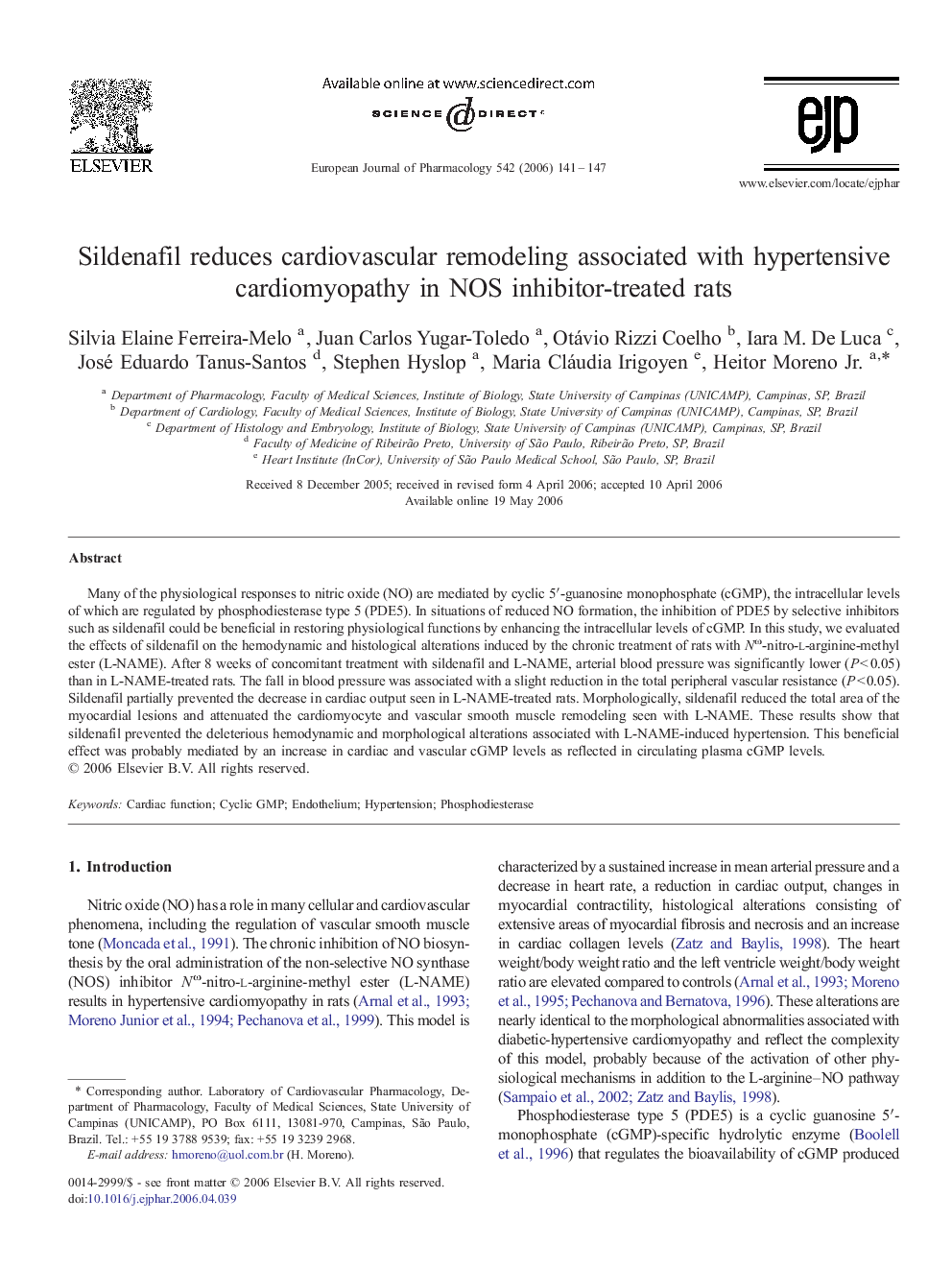| Article ID | Journal | Published Year | Pages | File Type |
|---|---|---|---|---|
| 2537047 | European Journal of Pharmacology | 2006 | 7 Pages |
Abstract
Many of the physiological responses to nitric oxide (NO) are mediated by cyclic 5â²-guanosine monophosphate (cGMP), the intracellular levels of which are regulated by phosphodiesterase type 5 (PDE5). In situations of reduced NO formation, the inhibition of PDE5 by selective inhibitors such as sildenafil could be beneficial in restoring physiological functions by enhancing the intracellular levels of cGMP. In this study, we evaluated the effects of sildenafil on the hemodynamic and histological alterations induced by the chronic treatment of rats with NÏ-nitro-l-arginine-methyl ester (L-NAME). After 8Â weeks of concomitant treatment with sildenafil and L-NAME, arterial blood pressure was significantly lower (PÂ <Â 0.05) than in L-NAME-treated rats. The fall in blood pressure was associated with a slight reduction in the total peripheral vascular resistance (PÂ <Â 0.05). Sildenafil partially prevented the decrease in cardiac output seen in L-NAME-treated rats. Morphologically, sildenafil reduced the total area of the myocardial lesions and attenuated the cardiomyocyte and vascular smooth muscle remodeling seen with L-NAME. These results show that sildenafil prevented the deleterious hemodynamic and morphological alterations associated with L-NAME-induced hypertension. This beneficial effect was probably mediated by an increase in cardiac and vascular cGMP levels as reflected in circulating plasma cGMP levels.
Related Topics
Life Sciences
Neuroscience
Cellular and Molecular Neuroscience
Authors
Silvia Elaine Ferreira-Melo, Juan Carlos Yugar-Toledo, Otávio Rizzi Coelho, Iara M. De Luca, José Eduardo Tanus-Santos, Stephen Hyslop, Maria Cláudia Irigoyen, Heitor Jr.,
